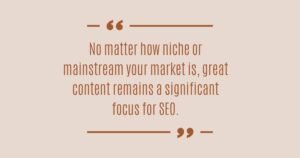Have you ever felt the excitement of launching a new project, only to find it fall flat due to an ill-chosen freelancer? Perhaps you’ve been there—scrambling to pick up the pieces of a missed deadline, an incomplete task, or worse, a project heading in the wrong direction. You might even have a memory of staring at the screen, asking yourself, “Where did I go wrong?”
That was the case with my friend Sarah. She’s a small business owner who wanted to ramp up her online presence. She hired a freelance web developer to redesign her website, envisioning a slick, user-friendly interface that would catapult her business into the digital age. Excited and hopeful, she paid a considerable sum upfront. The freelancer had an impressive portfolio, reasonable rates, and seemed professional. What could possibly go wrong?
A lot, as it turned out. The project which was supposed to take a month dragged on for three. Communication from the freelancer became sporadic, and then, one day, it stopped altogether. The end product was nothing like what she’d envisioned, and she was left with a half-baked website and a hole in her budget.
Sounds like a nightmare, right? It doesn’t have to be this way. Choosing the right freelancer for your project can be a game-changer, transforming your brilliant idea into a successful reality, without the headaches.
In this blog post, we’re going to walk through a detailed, step-by-step guide on how to choose the right freelancer for your project. We’ll cover everything from understanding your project needs, how to search and screen potential candidates, to making the final decision. By the end, you’ll be equipped with the knowledge to hire with confidence, ensuring a smooth journey to your project’s success.
So, are you ready to learn how to sidestep the potential pitfalls and find the perfect freelance fit for your next project? Let’s dive in.
Understanding Your Project Needs
Do you remember the old adage, “Failing to plan is planning to fail?” This statement rings particularly true when it comes to hiring a freelancer for your project. Jumping straight into the hiring process without defining the scope of your project is like embarking on a journey without a map. Yes, you might eventually get there, but it’s likely to take a lot longer, be far more stressful, and perhaps lead to unnecessary detours. That’s why understanding your project needs is an absolutely crucial first step in the freelancer selection process.
Define Your Project Scope
Tasks and Requirements Before you even start looking for a freelancer, you must have a clear idea of what you want to achieve. Defining the scope of your project gives both you and your potential freelancer a roadmap to follow. It helps to prevent scope creep, misunderstandings, and potential disputes down the line.
Here’s a step-by-step guide on how to do this:
- Break down your project into tasks: Start by outlining the big picture of your project. Then, break it down into smaller, manageable tasks. These could include design work, writing content, coding specific features, managing social media, and so on. Outsource project tasks wisely to ensure each aspect is covered effectively.
- Detail the requirements for each task: For each task, specify the requirements. If it’s a website design task, for example, you might need to specify the number of pages, required functionalities, preferred color schemes, etc.
- Establish your timeline: Deadlines are crucial for keeping your project on track. Identify key milestones in your project and assign a timeline for each.
- Determine the deliverables: What tangible outputs do you expect from the freelancer? This could be a completed website, a set of blog posts, a marketing plan, etc.
Determine the Skills and Expertise Required
Once you’ve defined your project scope, it’s time to identify the skills and expertise required to bring your project to life. Knowing this can help you to filter out unsuitable candidates early in the search process, saving you time and potential headaches later on.
- List the necessary skills for each task: Going back to your task list, write down the necessary skills for each one. These could include technical skills like programming languages or design software, as well as soft skills like freelancer project management or communication.
- Consider the level of expertise needed: Does your project need a seasoned expert or can it be completed by someone with less experience? This will affect the budget, timeline, and the quality of the work.
- Identify desirable attributes: Beyond the technical skills, consider what other attributes you value. These could include creativity, attention to detail, punctuality, or the ability to work independently.
Thoroughly understanding your project’s needs may take some time and brainstorming, but it’s a critical investment. It’s the foundation upon which the rest of your hiring process is built. If this foundation is solid, it increases the odds of everything else falling into place. On the other hand, if it’s shaky, it could spell trouble down the line. So, grab a coffee, sit down, and plan out your project. Choosing the right freelancer for your business begins here.
The Search Process
Now that you’ve nailed down your project requirements and the skills needed, it’s time to embark on the exciting journey of finding the right freelancer. But where should you look? Thankfully, there are numerous platforms designed to connect businesses with talented freelancers. This step to choose the best freelancer requires careful attention, as it’s your opportunity to delve into the importance of reviewing portfolios and considering freelance rates.
Platforms for Finding Freelancers
Upwork: One of the largest global freelancing platforms, Upwork covers a wide array of skill sets from web development to content writing, graphic design, and more. Screening freelancers on Upwork is easy with their built-in functionality.
Fiverr: Known for its affordable services starting at just $5, Fiverr is home to freelancers offering services in creative fields, digital marketing, writing, and programming, to name a few.
Freelancer: Similar to Upwork in scope, Freelancer offers millions of projects across categories like writing, design, marketing, coding, and more. This is another great platform for those wondering how to choose the right freelancer for your project.
Toptal: Toptal boasts of connecting you with the top 3% of freelance talent in the world, focusing primarily on designers, developers, and finance experts. For high-impact, critical projects, Toptal can be a good option.
Behance & Dribbble: These platforms are popular among creative freelancers, especially graphic designers, illustrators, and artists. It’s a great place to find high-quality, creative freelancers.
LinkedIn ProFinder: This is LinkedIn’s professional service marketplace which connects businesses with freelancers in fields like coaching, IT, design, and writing.
Remember, it’s not just about picking a platform and posting a job. You need to do a bit of homework, too.
The Importance of Reviewing Portfolios and Samples of Work
Portfolios are the freelancer’s version of a resume. They offer a glimpse into the freelancer’s style, their capabilities, and the quality of their work. So, take your time to carefully review them. Freelancer portfolio review is an integral part of choosing the right freelancer for your business. Here are a few things to consider:
Relevance: Does their portfolio contain work that is relevant to your project?
Quality: Is the work in the portfolio up to your standard?
Consistency: Are there consistent themes in the quality and style of work, or is it hit and miss?
Versatility: If your project requires a range of styles or skills, does the portfolio demonstrate the freelancer’s adaptability? Be wary of freelancers who cannot or will not share their portfolio. This is a potential red flag.
Considering Freelance Rates
Understanding Market Rates for the Skill Set You Require While it’s tempting to hire the freelancer with the lowest rate, remember the old saying “You get what you pay for.” If a freelancer’s rate is significantly below the market rate, you may end up with subpar work that could cost more to fix in the long run. Consider the freelancer rates and reviews to ensure you make a smart choice.
Research the average rates for the type of work you need completed and use this as a benchmark. Keep in mind that rates can vary based on experience, expertise, and location. Remember, investing in a good freelancer is investing in the success of your project.
Navigating the search process can feel a bit like a treasure hunt, but when you find a freelancer who ticks all the boxes, the payoff can be immense. So, take the time to do your due diligence – review portfolios carefully, understand market rates, and choose your platform wisely. Your perfect freelancer could be just around the corner. Remember, choosing the right freelancer is not just about skills and experience, it’s about finding the right fit for your unique project needs.
The Screening Process
Once you’ve cast your net into the vast sea of freelancers and received a bundle of proposals, you might find yourself feeling a little overwhelmed. How do you sift through the pile and determine which freelancer is the right fit for your project? This is where the screening process comes in. This is a key step to choose the best freelancer. It’s time to roll up your sleeves, put on your detective hat, and start digging into the details.
A. Creating a Shortlist: What to Look For in Proposals Not all proposals are created equal, and your first task is to create a shortlist. But what exactly should you be looking for? Here’s a guide to help you as you work to choose the right freelancer:
- Relevance: The freelancer should clearly demonstrate they’ve understood your project and its requirements. Look for specific examples of how they’ve tackled similar projects in the past.
- Experience: Check their work history. How long have they been freelancing? What kind of projects have they worked on? More experience often equates to higher reliability and quality.
- Skills: Do they possess the skills and expertise you outlined in your project description? Look for proof in their portfolio.
- Proposal Quality: Is their proposal well-written and organized? This can indicate their level of professionalism and attention to detail.
- Enthusiasm: Passion can be a great motivator. Does the freelancer seem excited about your project?
B. How to Conduct Interviews: What Questions to Ask Once you’ve shortlisted your candidates, it’s time to set up interviews. Interviewing freelancers can be done via video call, phone call, or even in-person if the situation allows. Here are some key questions to ask, which are valuable tips for choosing a freelance professional:
- Can you tell me more about your experience with similar projects?
- How do you handle tight deadlines or challenging tasks?
- Can you walk me through your work process?
- How do you handle feedback and revisions?
- What do you need from me to deliver the best result?
Remember, the interview isn’t just for you to learn more about the freelancer. It’s also an opportunity for the freelancer to ask questions about the project, which can give you insight into their thought process and level of interest.
C. Importance of Checking References and Reviews Finally, don’t skip the crucial step of checking references and reviews. If the freelancer passes your interviews, considering trial assignments for freelancers or at the very least, checking their past work reviews, can provide additional reassurance. Here’s why it matters:
- Confirm Past Performance: Reviews from past clients can confirm the freelancer’s ability to deliver quality work and meet deadlines.
- Verify Professionalism: You can get a sense of their professionalism, reliability, and communication skills.
- Spot Potential Red Flags: Repeated negative feedback, uncompleted tasks, or disputes can signal potential issues.
The screening process can seem time-consuming, but it’s an essential step in ensuring you choose the right freelancer for your project. By closely examining proposals, asking insightful questions during interviews, and checking references, you’re much more likely to find a freelancer who not only has the skills you need but also aligns well with your work style and project goals. Happy screening, and prepare yourself for the upcoming onboarding of a freelancer!





